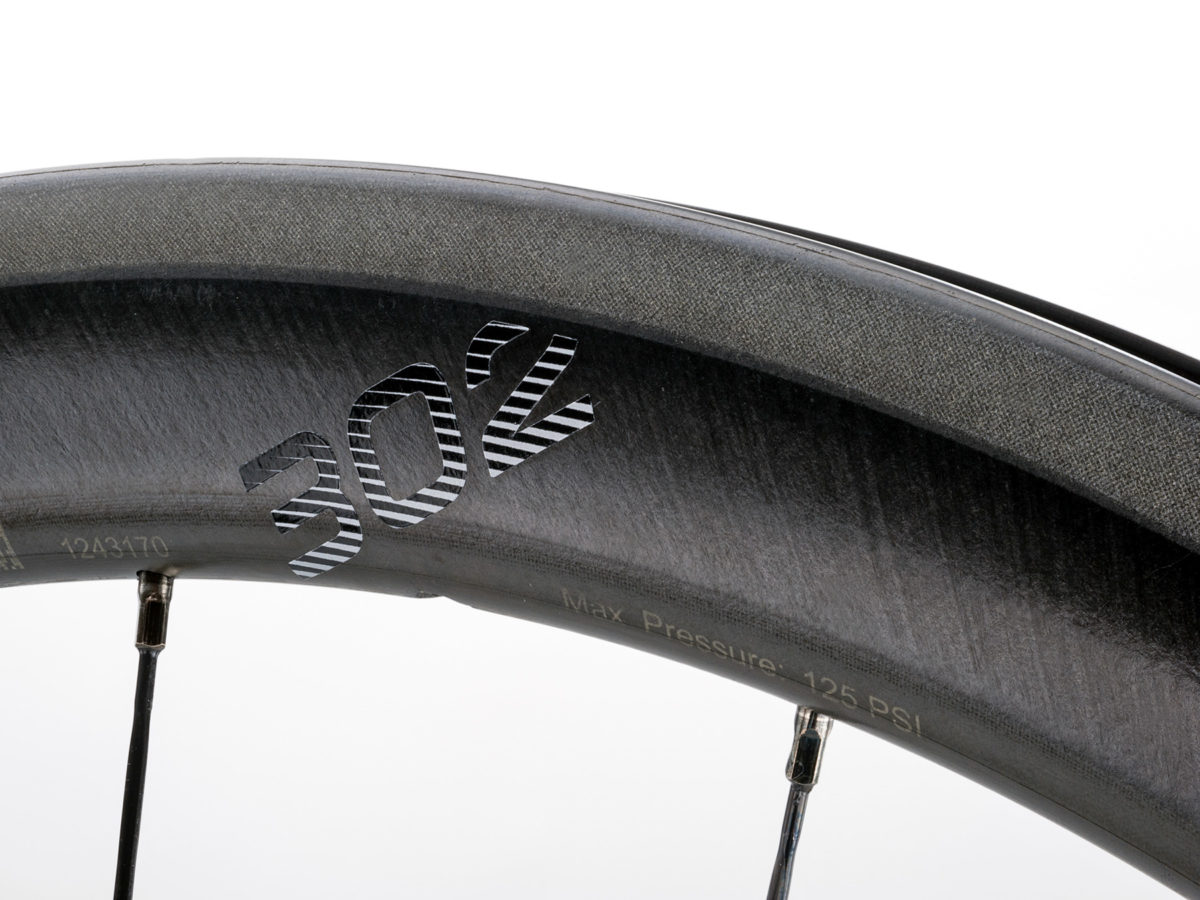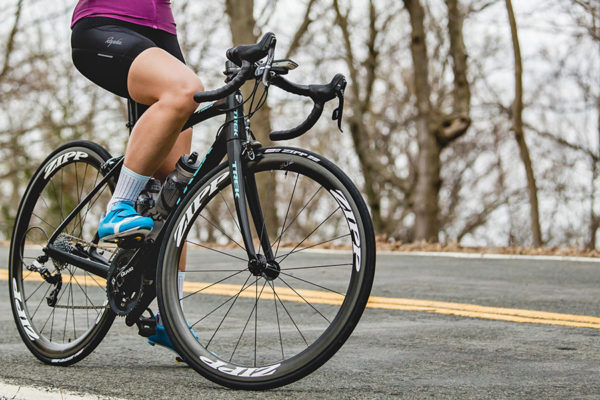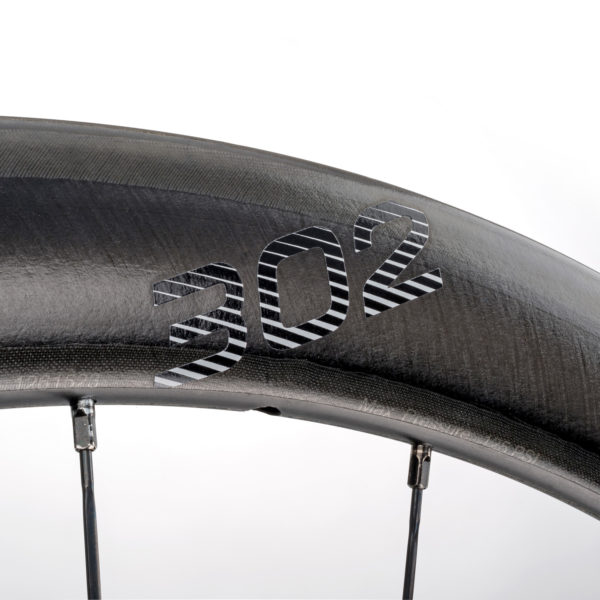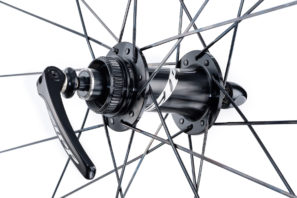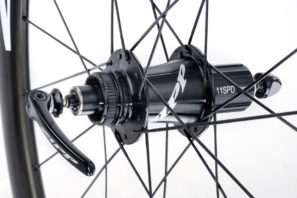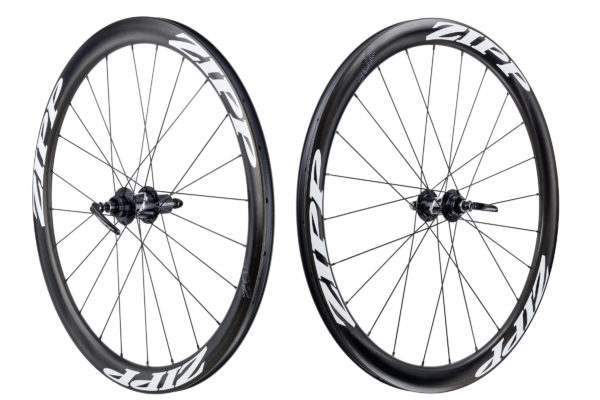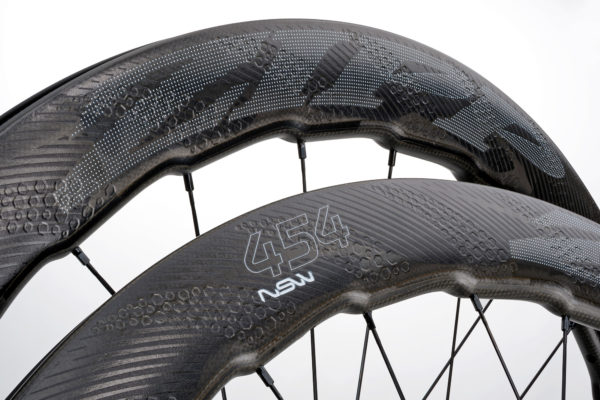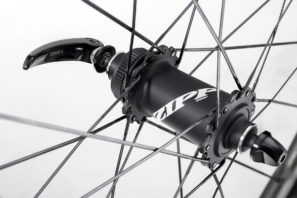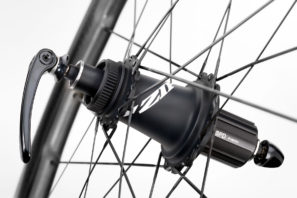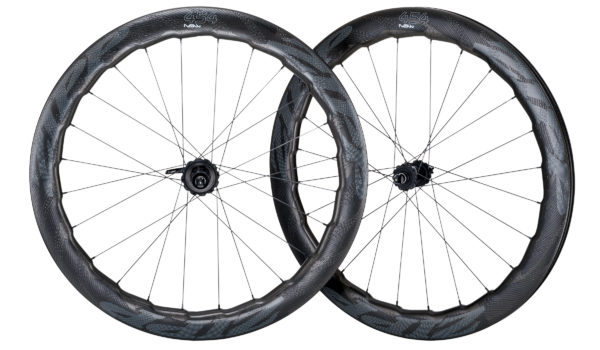The Zipp 303 is probably the single wheel that solidified the mid-depth carbon wheel revolution from the Spring Classics to time trials, with roadies of all levels now trying to benefit from the same combination of lightweight and all-around aero performance. But there is no mistaking that the Firecrest 303 with its signature dimples is an expensive wheelset, so Zipp developed a smooth walled version with more conventional hubs that let them drop the price by almost 45%. The new 302 carbon clinchers are available in both rim & disc brake versions, and aim to carry over a similar 45mm depth blend of aerodynamics & durability, although in a more narrow package.
At the same time Zipp has taken their top biomimicry 454 NSW carbon clinchers and given them disc brakes too. Get a look at both affordable and super pricey carbon options after the break…
302 Carbon Clinchers
The new clincher only 302 wheels share the same 45mm depth of their 303 counterpart, but use a more narrow profile that is at its widest 25.6mm width at the brake track and have just a 16.25mm internal rim width (vs. 21mm internal of the latest tubeless disc brake 303). The non-tubeless, carbon rims are still made in the US at Zipp’s Indianapolis production shop, and have been developed for low drag and stability in changing wind conditions. But the smooth outer surface for the rim, standard flanged hubs, and mid-level bladed spokes helped Zipp trim the pricing down a lot.
The new wheels are built up on a new set of hubs that Zipp is calling 76/176 that have conventional spoke flanges and are matched to J-bend Sapim CX Sprint bladed spokes and brass nipples for durability. The disc brake version shares what appears to be the same rim profile (minus a prepped braking surface) and a similar 76D/176D hubset that goes with centerlock rotor mounts. The 76D/176D hubs also offer standard axle compatibility with tool-free endcaps for 15mm front & 12mm thru-axles or standard QRs. Either XDR wheel can also be setup with SRAM XD driver bodies available separately.
The rim brake 302 Carbon Clinchers claim a weight of just 1645g (740g/905g, front/rear) with 20 radial spokes up front & 24 laced 2X in the rear.
The disc brake 302 Carbon Clinchers Disc Brake is just a tad heavier at 1695g (785g/910g) and goes with 24 2X spokes front & rear. Either wheelset sells for the same $1500/€1530/£1300 price with white decals only. The rim brake wheels will be available everywhere within the next week, while the disc brake version should be available next month in June 2017.
454 NSW Disc Brake carbon clinchers
As for the 454 NSW Disc Brake wheels, they sit on the complete opposite side of the spectrum. Incorporating not just Zipp’s signature aero dimples in their latest HexFin ABLC iteration (now extended all the way to the tire), but also the whale fin inspired Sawtooth design seen on eth original 454 that sees the rim depth oscillate between 53mm & 58mm in depth and the rest of the Nest Speed Weaponry top-level tech , the wheels come with a premium price tag now available for road disc brake riders. At $4000/€4000/£3390 they share the same 17mm internal, 27.7mm max external rim profile as the rim brake version (not tubeless ready).
The key update though are the new Cognition Disc hubs, as a disc brake first for the NSW line-up. They share the same Axial Clutch tech that disengages its pawls when coasting to lower drag and precision Swiss made steel bearings as the hubs in the rim brake NSW wheels. What is new is also both the use of J-bend spokes instead of straight-pull, as well as the new centerlock rotor interface.
The 454 NSW DB wheels with 24 2x Sapim CX-Ray spokes front & rear weigh 1615g for the set (756g/859g), get printed on NSW graphics and will be available in June 2017.
